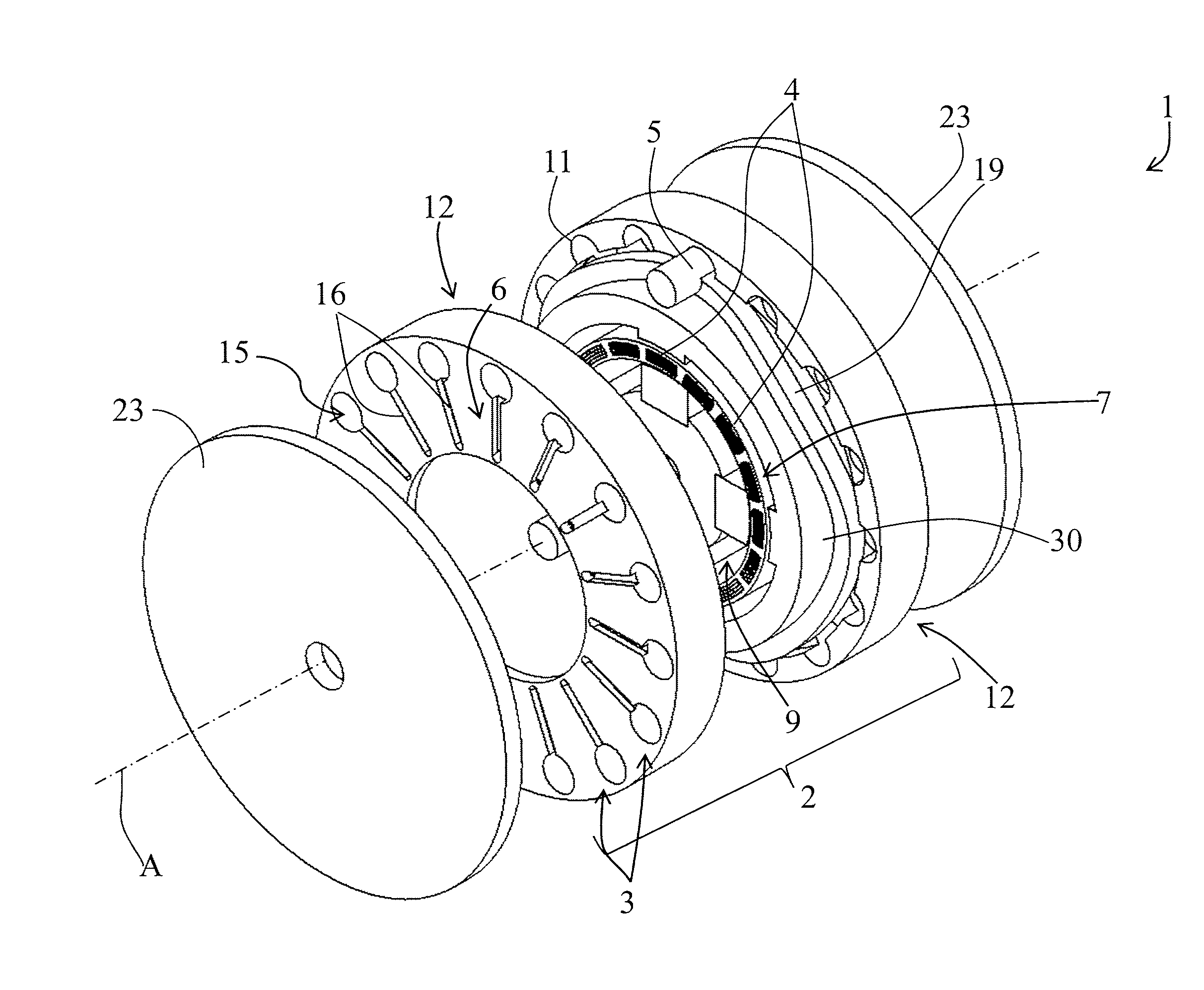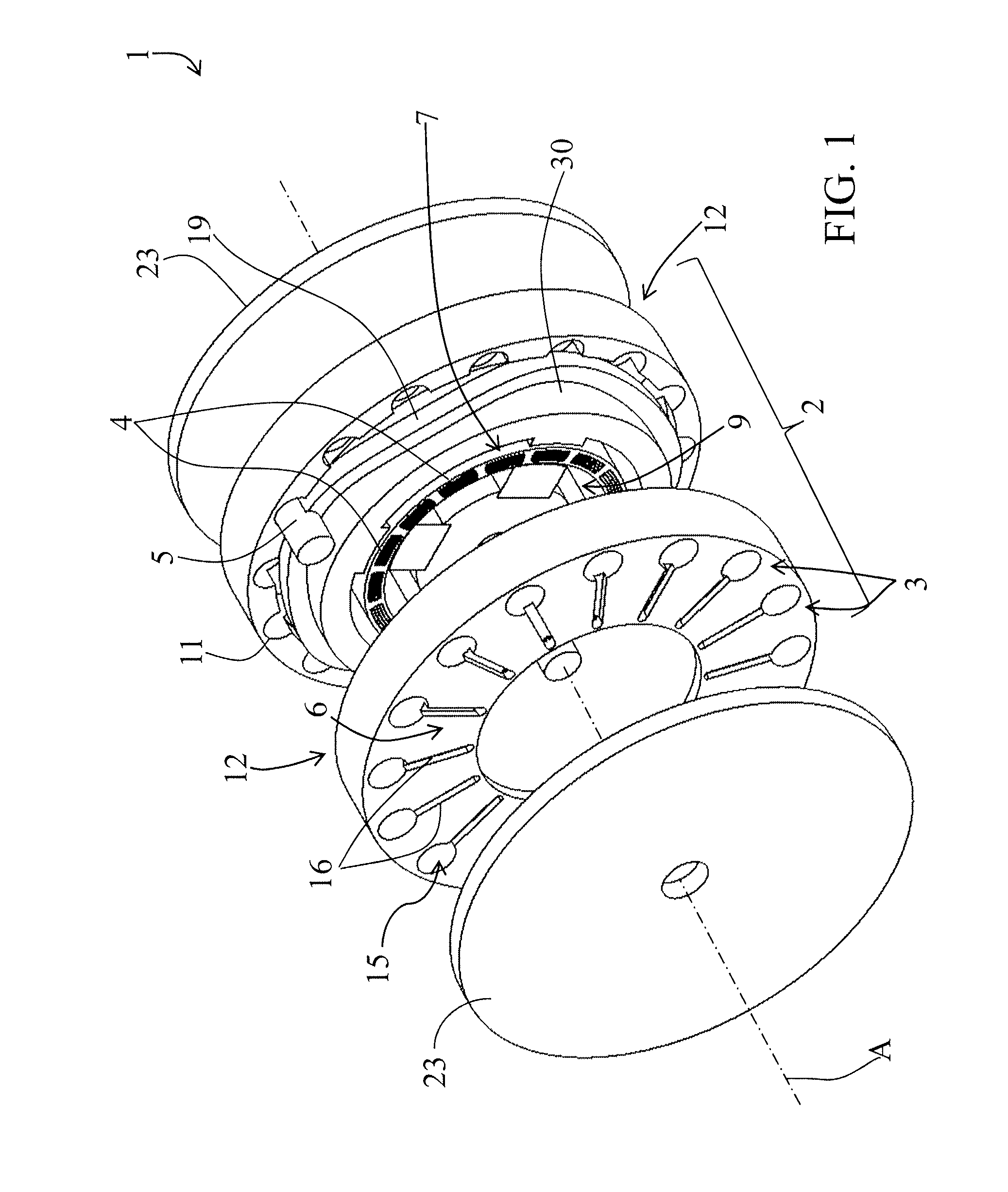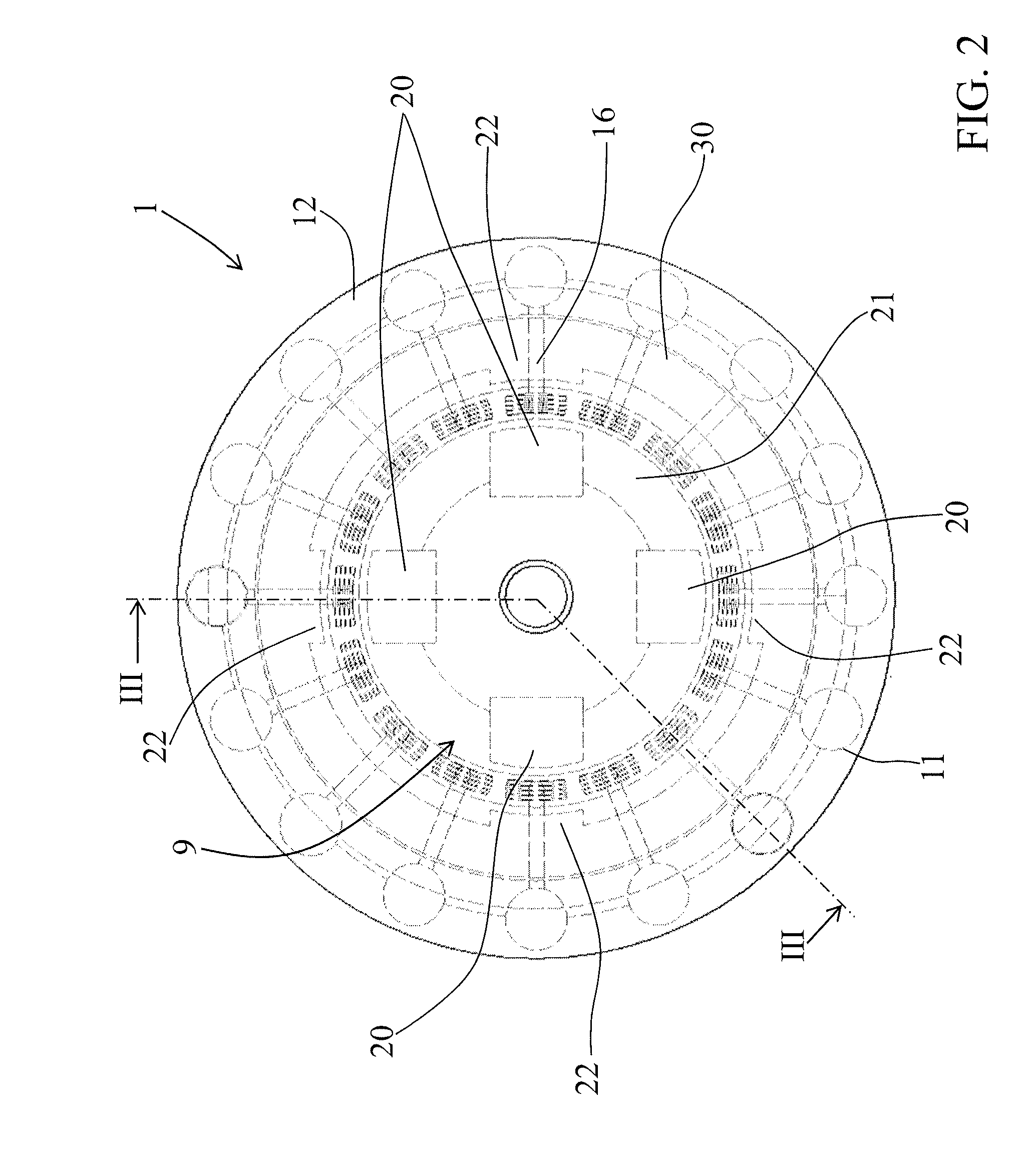Thermal generator with magnetocaloric material
a magnetocaloric material and heat generator technology, applied in the direction of machines, lighting and heating apparatus, domestic cooling apparatus, etc., can solve the problems of increasing the risk of malfunction, limiting the useful calorific output, and increasing the number of parts, so as to reduce the space requirement of the generator and the number of moving elements
- Summary
- Abstract
- Description
- Claims
- Application Information
AI Technical Summary
Benefits of technology
Problems solved by technology
Method used
Image
Examples
first embodiment
[0033]FIGS. 1 to 6 represent a heat generator 1 according to the invention, in which the structure of the generator 1 is circular.
[0034]The heat generator 1 represented in FIGS. 1 to 4 comprises only one thermal flux generating unit 2. This unit is provided with several thermal modules 3 each comprising a magnetocaloric element 4 across which a heat transfer fluid is circulated by a means of displacement 5 in the form of a piston. For simplification reasons, only one piston 5 is represented in FIG. 1. The magnetocaloric elements 4 are arranged in a circle around a central axis A and a magnetic arrangement 9 rotates around the central axis A so as to submit the magnetocaloric elements 4 to a variable magnetic field to perform alternately a heating cycle and a cooling cycle in the latter.
[0035]The magnetocaloric elements 4 are permeable to the heat transfer fluid and can be made of one or several magnetocaloric materials. They comprise open fluid passages that can be made of the pores...
second embodiment
[0047]FIGS. 7A, 7B and 8 represent a heat generator 200 according to the invention, in which the structure of the generator 200 is approximately linear. FIG. 8 represents more specifically, at the level of the cut section, the closed heat transfer fluid circulation circuit 6, the magnetocaloric element 4 and the piston 60.
[0048]The thermal flux generation unit 202 is linear, the magnetocaloric elements 4 being aligned. In the represented example, the heat generator 200 is made up of only one unit 202 comprising a thermal module 3. The invention covers, of course, heat generators comprising several thermal flux generation units. The number of units and thermal modules will be determined as a function of the power of the heat generator.
[0049]The field closing device 32 has a yoke-shaped profile whose both legs are provided, on their internal faces, with permanent magnets 24 with opposite polarities and making up the magnetic arrangement 9. The reciprocating translational movement (acc...
PUM
 Login to View More
Login to View More Abstract
Description
Claims
Application Information
 Login to View More
Login to View More - R&D
- Intellectual Property
- Life Sciences
- Materials
- Tech Scout
- Unparalleled Data Quality
- Higher Quality Content
- 60% Fewer Hallucinations
Browse by: Latest US Patents, China's latest patents, Technical Efficacy Thesaurus, Application Domain, Technology Topic, Popular Technical Reports.
© 2025 PatSnap. All rights reserved.Legal|Privacy policy|Modern Slavery Act Transparency Statement|Sitemap|About US| Contact US: help@patsnap.com



